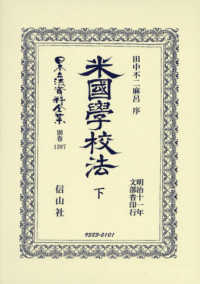Full Description
Using and Understanding Java Data Objects is the programmer's guide to JDO. Adopted by the Java Community Process, Java Data Objects (JDO) specifies a universal and transparent persistence service for Java objects. JDO reduces the amount of code that application developers write to store and retrieve persistent state. JDO frees application designers and programmers from the details of persistence. As a result, designs can be more object-oriented, programmers can be more productive, and applications can be more robust and flexible. This book has two missions. The first mission is to give you a tour of JDO. During this tour, author David Ezzio attempts to give you the benefit of his 2 years' experience learning about JDO and using it to build some fairly simple, but demanding applications. The second mission is to give you a tour of the open source JDO Learning Tools. Some of these tools poke and prod JDO so that you can learn more about its behavior. Other tools are examples of three application architectures. Separate chapters and examples cover client-server applications, web applications, and applications using Enterprise JavaBeans.
Contents
Chapter 1: Basic Concepts in JDO Chapter 2: Queries Chapter 3: The Persistence Manager
Chapter 4: Transactions and Caching
Chapter 5: Enhanced Classes and Managed Fields Chapter 6: Factories That Produce Persistence Managers
Chapter 7: Helpers, Callbacks, and Exceptions Chapter 8: Using JDO to Learn More
Chapter 9: Using JDO in a Swing Application
Chapter 10: Using JDO in a Web Application Chapter 11 Using JDO in Enterprise JavaBeans
Glossary
Appendix: Large UML Diagrams








